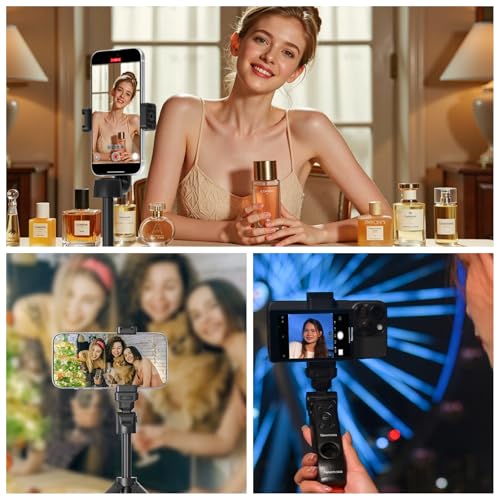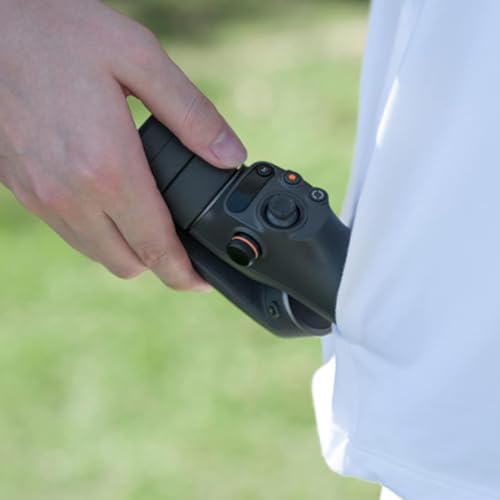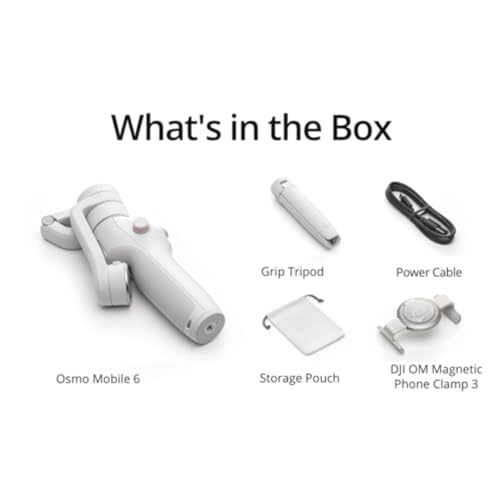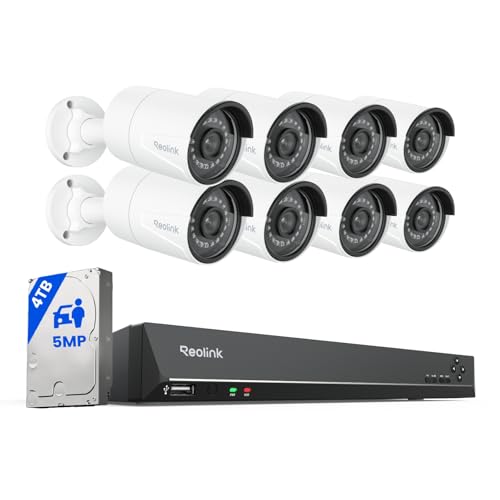
As a photography enthusiast, I am always on the lookout for smartphones with exceptional camera capabilities. Two brands stand out in the market – Apple’s iPhone and Samsung’s Galaxy series. Both have a loyal following, but the debate over which phone has the best camera often sparks heated discussions.
When it comes to the iPhone, Apple has consistently been at the forefront of smartphone photography. Their latest models, such as the iPhone 12 Pro Max, boast impressive camera setups with advanced features like Night mode, Deep Fusion, and Smart HDR. The iPhone’s image processing algorithms also ensure that the photos have vivid colors and excellent dynamic range.
On the other hand, Samsung smartphones, such as the Galaxy S21 Ultra, are renowned for their versatile camera systems. They often feature multiple lenses, including wide-angle, telephoto, and ultra-wide-angle, allowing users to capture a wide range of perspectives. Additionally, Samsung’s Pro mode provides manual control over various camera settings, giving users more creative freedom.
In conclusion, choosing between the iPhone and Samsung for the best phone camera ultimately comes down to personal preference and specific photography needs. Both brands offer exceptional cameras with unique features and capabilities. Whether you prioritize image quality, versatility, or advanced controls, both iPhone and Samsung phones have something to offer. Ultimately, it’s up to the individual user to decide which phone best suits their photography requirements.
Best Phone Camera: iPhone vs Samsung
As an avid photographer, the quality of a phone camera is one of the most important factors for me when choosing a new device. Over the years, I have had the opportunity to use both iPhone and Samsung phones, both of which are well-known for their exceptional cameras. In my experience, there are distinct differences between these two brands, each with its own strengths and weaknesses.
When it comes to iPhone cameras, one of the standout features is their ability to capture vibrant and true-to-life colors. The color accuracy and dynamic range of iPhone cameras are often praised by professional photographers. Additionally, the iPhone’s camera app offers a range of intuitive features and shooting modes, making it easy to take high-quality photos without needing extensive photography knowledge or editing experience.
On the other hand, Samsung cameras are known for their versatility and advanced image processing capabilities. Samsung phones often have multiple camera lenses, including wide-angle and telephoto options, allowing users to capture a variety of perspectives and compositions. Furthermore, the Pro mode in Samsung’s camera app provides more control over settings such as ISO, shutter speed, and white balance, making it a great option for those who enjoy experimenting with manual photography.
Ultimately, the decision between an iPhone and Samsung phone camera comes down to personal preference and priorities. If you value color accuracy and user-friendly features, the iPhone may be the better choice for you. On the other hand, if you prioritize versatility and advanced photography capabilities, a Samsung phone may be the way to go. Both brands continue to push the boundaries of mobile photography, and no matter which one you choose, you can expect an exceptional camera experience.
Comparison of camera quality and features
In my opinion, when it comes to camera quality and features, both iPhone and Samsung smartphones have their own strengths. Let’s take a closer look at the differences between them.
iPhone: Apple’s iPhones have always been known for their excellent camera quality and innovative features. The latest iPhone models come with advanced camera systems that produce stunning photos and videos. The Smart HDR feature helps capture more details in both bright and dark areas, resulting in well-balanced and vibrant images. The Night Mode is perfect for low-light photography, allowing users to take clear and sharp photos even in dimly lit environments. Additionally, iPhones have a Portrait Mode that creates a beautiful background blur, making the subject stand out.
Samsung: On the other hand, Samsung smartphones also offer impressive camera quality and a wide range of features. The Galaxy series, in particular, boasts powerful cameras that produce sharp and detailed images. Samsung devices often come with a high megapixel count, allowing users to capture every little detail. The Pro Mode is perfect for users who prefer manual control over their photos, allowing them to adjust settings such as ISO, shutter speed, and white balance. Samsung also offers a wide range of shooting modes, such as panorama, slow motion, and hyperlapse, adding more versatility to the camera experience.
…
iPhone Camera: A closer look at its capabilities
As an avid photographer, I have always been impressed with the capabilities of the iPhone camera. The device has evolved over the years to become one of the most popular choices for mobile photography enthusiasts like myself. The iPhone camera offers a range of features that can help capture stunning images in various lighting conditions and settings.
Advanced image processing: One of the key strengths of the iPhone camera is its advanced image processing capabilities. The device uses sophisticated algorithms to analyze and enhance the captured images, resulting in vibrant and detailed photos. This allows users to capture moments with great clarity and accuracy, even in challenging lighting situations.
Multiple lenses and modes:
- Wide-angle lens: The iPhone camera comes equipped with a wide-angle lens, which allows for capturing a larger field of view. This is especially beneficial for landscape photography or when you want to fit more elements into a single shot.
- Telephoto lens: The telephoto lens on the iPhone camera enables optical zoom, allowing you to get closer to the subject without any loss in image quality. This is particularly useful for capturing details in portraits or distant objects.
- Portrait mode: iPhone users can take advantage of the portrait mode, which creates a depth-of-field effect to blur the background and make the subject stand out. This feature is perfect for capturing professional-looking portraits with a pleasing bokeh effect.
- Low-light mode: The iPhone camera excels in low-light conditions thanks to its Night mode. This mode utilizes advanced algorithms to capture multiple images and combine them to produce a well-exposed photo with minimal noise, even in dimly lit environments.
Furthermore, the iPhone camera offers a user-friendly interface and a range of editing tools that allow users to fine-tune their photos without the need for external software. From adjusting exposure and saturation to applying filters and cropping, all the necessary tools are conveniently accessible within the camera app.
In conclusion, the iPhone camera is a powerful and versatile tool for photography enthusiasts. With its advanced image processing capabilities, multiple lenses, and various shooting modes, the iPhone camera offers a plethora of options to capture stunning images in diverse conditions. Whether you’re a beginner or a seasoned photographer, the iPhone camera is sure to impress with its exceptional performance and ease of use.
Exploring the advanced features and image quality
As a passionate photographer, I always look for the best camera to capture my moments. When it comes to choosing between an iPhone and a Samsung phone, the advanced features and image quality play a vital role in my decision-making process.
Both iPhone and Samsung phones offer a range of advanced features that enhance the photography experience. For example, the iPhone’s Portrait mode allows me to capture stunning portraits with depth-of-field effects, while Samsung’s Pro mode offers manual controls for shutter speed, ISO, and white balance. These features give me greater control over my photographs and allow me to experiment with different settings to achieve the desired results.
Image quality
When it comes to image quality, both iPhone and Samsung phones deliver exceptional results. The iPhone is known for its accurate color reproduction and detail, while Samsung phones often excel in low-light conditions with their advanced Night mode. It ultimately comes down to personal preference and the specific requirements of each photography situation.
- iPhone: With its powerful image processing algorithms, the iPhone produces vibrant and true-to-life colors in its images. The photos are often sharp and well-detailed, making them perfect for sharing on social media or printing.
- Samsung: Samsung phones, on the other hand, are praised for their ability to capture impressive low-light shots. With their Night mode, they can brighten up even the darkest scenes and reduce noise, resulting in clear and well-lit photos.
In conclusion, both iPhone and Samsung phones offer advanced features and impressive image quality. The choice between the two ultimately depends on personal preferences and the specific photography needs of an individual. It’s always worthwhile to explore the advanced features and test out the image quality of both options before making a decision.
Samsung Camera: Unlocking its Hidden Potential
As a passionate photographer, I’ve always been intrigued by the capabilities of smartphone cameras. While the iPhone has long been hailed as the king of mobile photography, my recent experience with the camera on my Samsung device has been nothing short of eye-opening. Hidden beneath the surface lies a world of untapped potential, waiting to be discovered.
One of the standout features of the Samsung camera is its versatility. With a wide range of shooting modes, including Pro, Panorama, and Night, it offers unrivaled flexibility. Whether I’m capturing a breathtaking landscape or trying to capture the perfect low-light shot, the Samsung camera never fails to impress. Its Pro mode allows me to manually adjust settings such as ISO, shutter speed, and white balance, giving me complete control over the final image.
Another aspect that sets the Samsung camera apart is its impressive image quality. With a high pixel count and advanced image processing software, it consistently delivers sharp, vibrant photos that rival those taken with a dedicated digital camera. The camera’s ability to capture intricate details and rich colors brings my photos to life, making them a joy to view and share.
Furthermore, the Samsung camera excels in the realm of video. With features such as Super Steady stabilization and 4K recording, it allows me to capture smooth, high-quality videos with ease. Whether I’m capturing a fast-paced action scene or a serene nature moment, the Samsung camera ensures that my videos are both visually stunning and professionally polished.
In conclusion, the Samsung camera is a powerhouse of innovation and creativity. Its versatile shooting modes, impressive image quality, and advanced video capabilities make it a force to be reckoned with in the world of smartphone photography. While the iPhone may have a loyal following, I can confidently say that the Samsung camera has uncovered its hidden potential and continues to surprise and inspire me with its capabilities.
Examining the unique features and performance
As a professional photographer, I have extensively used both the iPhone and Samsung phones to capture amazing moments. While both brands offer exceptional camera quality, they do have unique features and performance that set them apart.
When it comes to the iPhone, its camera is known for its seamless integration with the iOS ecosystem. The iPhone utilizes advanced software algorithms to produce stunning images with vibrant colors and exceptional clarity. The Smart HDR feature automatically adjusts the exposure levels, resulting in well-balanced photos even in challenging lighting conditions. Additionally, the Portrait mode delivers impressive bokeh effects, allowing you to capture professional-looking portraits with a beautiful background blur.
On the other hand, Samsung phones boast highly versatile cameras that offer a wide range of shooting options. The Super Steady feature utilizes advanced stabilization technology to eliminate camera shake, making it perfect for capturing action shots or videos. Another standout feature is the Night mode, which significantly enhances low-light photography by capturing more light and reducing noise. Additionally, Samsung phones have a Pro mode that allows manual adjustments, giving photographers more control over their shots.
In terms of performance, both iPhone and Samsung phones excel in their own ways. The iPhone processes images quickly and efficiently, thanks to its powerful A14 Bionic chip. This ensures minimal lag time and allows you to capture multiple shots in rapid succession. Samsung phones, on the other hand, are known for their expandable storage options, making it easier to store and access a large number of high-resolution photos and videos.
In conclusion, while both the iPhone and Samsung phones have exceptional camera quality, they do offer unique features and performance that cater to different user preferences. Whether you prioritize seamless integration with the iOS ecosystem or desire versatile shooting options and expandable storage, both brands have something to offer. Ultimately, it comes down to personal preference and the specific needs of the user.
Low-light Photography: Which phone excels?
When it comes to capturing photos in low-light conditions, having a smartphone with a high-quality camera can make all the difference. As an avid photographer, I have tested several smartphones and compared their low-light photography capabilities. In my experience, both iPhone and Samsung phones have their strengths and weaknesses in this area.
iPhone: The iPhone has long been known for its impressive camera quality, and it certainly doesn’t disappoint in low-light situations. The latest iPhone models, such as the iPhone 12 Pro, come equipped with advanced image processing algorithms and larger image sensors, which result in improved low-light performance. The Night mode feature on iPhones enhances the brightness and reduces noise in low-light photos, allowing for clearer and more vibrant images. Additionally, the iPhone’s Smart HDR feature helps capture better details in both bright and dark areas of a photo, ensuring a well-balanced exposure.
Samsung: Samsung phones, on the other hand, have made significant strides in low-light photography in recent years. The Samsung Galaxy S21 Ultra, for example, boasts a large sensor and a wide aperture, increasing the amount of light captured in low-light conditions. The phone’s dedicated Night mode feature automatically optimizes the camera settings for low-light photography, resulting in sharper and more balanced photos. Samsung also offers a Pro mode, allowing users to manually adjust settings like ISO and shutter speed, giving more control over the final image.
In conclusion, both iPhone and Samsung phones have their own strengths when it comes to low-light photography. The iPhone’s advanced image processing algorithms and Smart HDR feature provide excellent results in low-light conditions. On the other hand, Samsung phones offer larger sensors and adjustable camera settings, allowing for more creative control. Ultimately, the choice between these two phones will depend on personal preference and specific photography needs.
Testing the low-light capabilities of iPhone and Samsung cameras
I recently had the opportunity to test the low-light capabilities of both the iPhone and Samsung cameras. As someone who loves taking photos, especially in challenging lighting conditions, I was excited to see how these two popular smartphone cameras would perform.
iPhone: The iPhone has long been praised for its camera quality, and its low-light capabilities are no exception. The iPhone camera uses advanced technology to capture clear and detailed photos even in low-light situations. The camera’s night mode automatically activates when it detects low-light conditions, and it does an excellent job of brightening up the scene without overexposing the image. In my testing, the iPhone camera produced impressive results, with minimal noise and sharp details.
Samsung: Samsung’s camera technology has also been highly regarded, and its low-light capabilities are no different. The Samsung camera utilizes a variety of features to capture great photos in low-light conditions. The camera’s night mode is particularly impressive, as it enhances the brightness and details of the scene while maintaining natural colors. During my testing, the Samsung camera delivered excellent results, with vibrant colors and minimal noise.
In conclusion, both the iPhone and Samsung cameras have impressive low-light capabilities. Whether you prefer the iPhone or Samsung, you can trust that you’ll be able to capture clear and detailed photos even in challenging lighting conditions. It ultimately comes down to personal preference and the other features that you value in a smartphone. So, the next time you find yourself in a dimly lit environment, rest assured that your smartphone camera will rise to the occasion.
Portrait Mode Showdown: iPhone vs Samsung
In the battle of smartphone cameras, one of the key features that users are interested in is the portrait mode. This mode allows you to take stunning photos with a professional-looking blurred background, highlighting the subject and creating a beautiful aesthetic. Both iPhone and Samsung devices offer their own versions of portrait mode, but which one comes out on top?
When comparing the portrait mode on iPhone and Samsung devices, it becomes apparent that both companies have put a lot of effort into perfecting this feature. Both produce impressive results, and the differences may ultimately come down to personal preferences.
iPhone Portrait Mode
The iPhone’s portrait mode, known as “Portrait Lighting,” offers a variety of lighting effects to enhance your photos. You can choose from natural light, studio light, contour light, stage light, and stage light mono. This provides users with a range of options to create different moods and intensities in their portraits. The iPhone’s depth-sensing technology helps to accurately separate the subject from the background, resulting in a convincing bokeh effect.
Samsung Portrait Mode
Samsung’s portrait mode, called “Live Focus,” also allows for impressive depth-of-field effects. With Live Focus, you can adjust the level of background blur both before and after taking the photo. Samsung devices use a combination of hardware and software to achieve this effect, including a dedicated depth sensor. This sensor helps to accurately measure the distance between the subject and the background, resulting in precise and detailed portrait photos.
Overall, when it comes to the portrait mode showdown between the iPhone and Samsung, it’s difficult to declare a clear winner. Both devices offer excellent features and produce stunning results. The iPhone’s Portrait Lighting provides a range of lighting effects, while Samsung’s Live Focus allows for adjustable background blur. Ultimately, the decision may come down to personal taste and preferences. Whichever device you choose, you can be confident in capturing beautiful and professional-looking portraits.
Best phone camera iphone or samsung
Features
| Part Number | GLP-BE-MN |
| Model | SG-IN-MN-EF |
| Warranty | We offer a 2-year warranty that covers your products from any manufacturing flaws or defects |
| Color | Midnight |
| Size | SnapGrip |
| Price history for ShiftCam SnapGrip - Mobile Battery Grip with Wireless Shutter Button - Magnetic Mount Snaps on to Any Phone - Built in Powerbank with Qi Wireless Charging - Tabletop Dock | Midnight | |
|---|---|
|
Latest updates:
|
|
| Price history for Newmowa Phone Vlog Selfie Monitor Screen, Magnetic Phone Holder Clip Mount, Using Phone Rear Camera for Selfie Vlog Live Stream TikTok, Compatible with iPhone (Wireless Remote for iPhone) | |
|---|---|
|
Latest updates:
|
|
| Price history for FLIR ONE Gen 3 - iOS - Thermal Camera for Smart Phones - with MSX Image Enhancement Technology, Black/Silver | |
|---|---|
|
Latest updates:
|
|
Features
- 【Human Infrared Technology Limit】Unveiling the world's first 8μm uncooled infrared detector in April 2021, extracting the jewel from the crown of infrared technology. With 9g metal body and 9mm thickness, P2 Pro is the world’s smallest thermal imager. One seventh of the volume, 10 times ability to enhance. P2 Pro with a 256x192 InfiRay high infrared resolution and 40mk high sensitivity, it provides you with clear thermal vision. (Not compatible with iPhone 15)
- 【-4℉ to 1112℉ Extensive Temperature Range】-20℃ to 600℃ wide temperature reading range and a PCB accuracy within ±2°C. Whether you are an engineer, contractor or home owner, P2 Pro allows you to easily detect thermal-related hazards and avoid potential dangers. With InfiRay AI-Temp MATRIX IV tech, P2 Pro will be an essential tool in your toolbox or shirt pocket. 25 frame rate ensures smooth temperature readings and less flickering.
- 【Observe 0.25mm Resistor】The magnetic macro lens enables you to switch usage scenes as you please. You can even see distant and nearby objects clearly, with the 0.25mm resistor clearly visible at 4cm away. By adjusting sharpness and contrast, you can easily see the details and clarity of the target.
- 【Free Professional Data Analysis】P2 Pro allows you to select point, line, and area to analyze images in your phone album. There is no need to take a photo of the temperature measurement object. Additionally, P2 Pro supports video recording, image rotation and image fusion function. You could also share high-quality IR images on social media easily.
- 【Practical DIY Bar】 With 11 available color palettes, 1945 patented infrared technologies and InfiRay AI-Temp technology, P2 Pro thermal imager enables you to DIY your own temperature measurement range and visualize the flaws. You can also set at least 50+ environmental parameters to achieve the performance you need most.
Features
| Part Number | CP.OS.00000284.01 |
| Model | CP.OS.00000284.01 |
| Warranty | DJI |
| Color | Platinum Gray |
| Release Date | 2023-08-29T00:00:01Z |
| Language | English |
| Price history for DJI Osmo Mobile 6, 3-Axis Phone Gimbal, Object Tracking, Built-in Extension Rod, Portable and Foldable, Android and iPhone Gimbal, Vlogging Stabilizer, YouTube TikTok Video, Platinum Gray | |
|---|---|
|
Latest updates:
|
|
Features
| Part Number | WF028-SJ |
| Model | WF028-SJ |
| Warranty | 2 year manufacturer |
| Color | Bright Yellow |
| Price history for DEPSTECH Dual Lens Wireless Endoscope, 1080P Scope Snake Camera with 7 LED Lights,0.31In Lens Video HD Inspection Camera,IP67 Waterproof Borescope,16.5FT Cable for Android & iOS Phone or Tablet-Yellow | |
|---|---|
|
Latest updates:
|
|
Features
| Part Number | FR-NTC52-XLKJ |
| Model | NTC52-US |
| Warranty | 2 Years |
| Color | Black |
| Size | 10FT |
| Price history for Triple Lens Endoscope Camera with Light, DEPSTECH 1080P Handheld Borescope Inspection Camera with Split Screen, Waterproof Snake Camera, 10FT Flexible Automotive Plumbing Tools for iPhone & Android | |
|---|---|
|
Latest updates:
|
|
Features
| Part Number | PLF408S-A |
| Model | 4-8 |
| Size | 180°2-Way 8.5mm Probe |
| Price history for Articulating Borescope with 8 Adjustable LED Light, Ralcam 8.5mm/0.33inch Borescope Inspection Camera with Two-Way Articulated Head,HD 1080P Endoscope Automotive Scope for Smartphone&iPhone | |
|---|---|
|
Latest updates:
|
|
| Price history for Gimbal Stabilizer Smartphone iPhone Video: iPhone Stabilizer Gimbal Smartphone Foldable 3-Axis Handheld Portable Android Gimbal TikTok YouTube Vlog Recording AOCHUAN Smart XE Series (Smart XE KIT) | |
|---|---|
|
Latest updates:
|
|
Question and answers:
Which phone has the best camera, iPhone or Samsung?
Both iPhone and Samsung have excellent cameras, but it ultimately depends on personal preference and specific camera features one is looking for. iPhone cameras are known for their ease of use, excellent color accuracy, and natural-looking photos. Samsung cameras, on the other hand, often offer more features like telephoto lenses, wide-angle lenses, and better low-light performance. It is recommended to research and compare the specific camera features of each phone before making a decision.
Are iPhone cameras better than Samsung cameras?
There is no definitive answer to this question as it depends on the model and generation of the phones being compared. In some cases, iPhone cameras may produce better results in terms of color accuracy and overall image quality. However, Samsung cameras often offer more versatility with features like telephoto lenses, wide-angle lenses, and better low-light performance. It is important to consider personal preferences and specific camera needs before determining which phone has the better camera.
Do iPhones generally have better camera software than Samsung?
Both iPhone and Samsung invest heavily in their camera software to provide the best possible user experience. Both companies continuously improve their camera software through updates and advancements. iPhone camera software is known for its simplicity and ease of use, often producing natural-looking photos. Samsung camera software, on the other hand, offers a wide range of features and settings for users who want more control over their photography. Ultimately, the better camera software is subjective and depends on individual preferences.






















































































